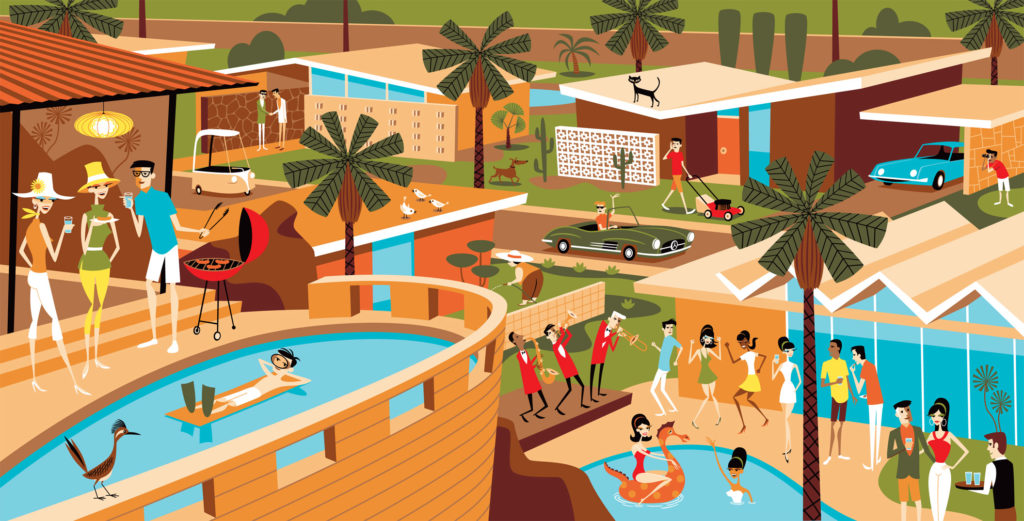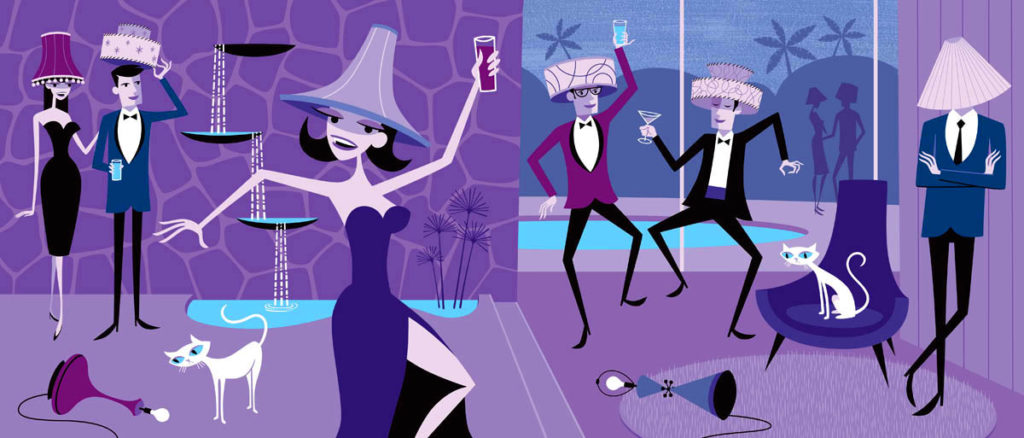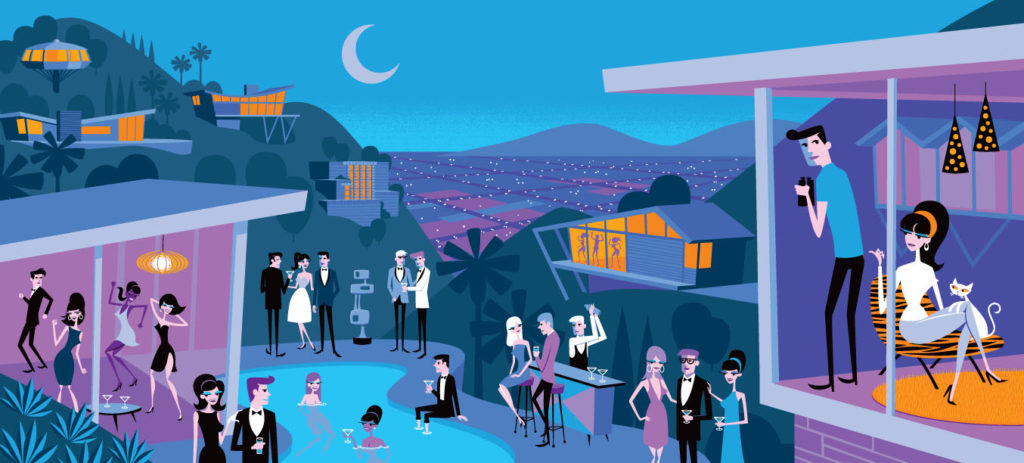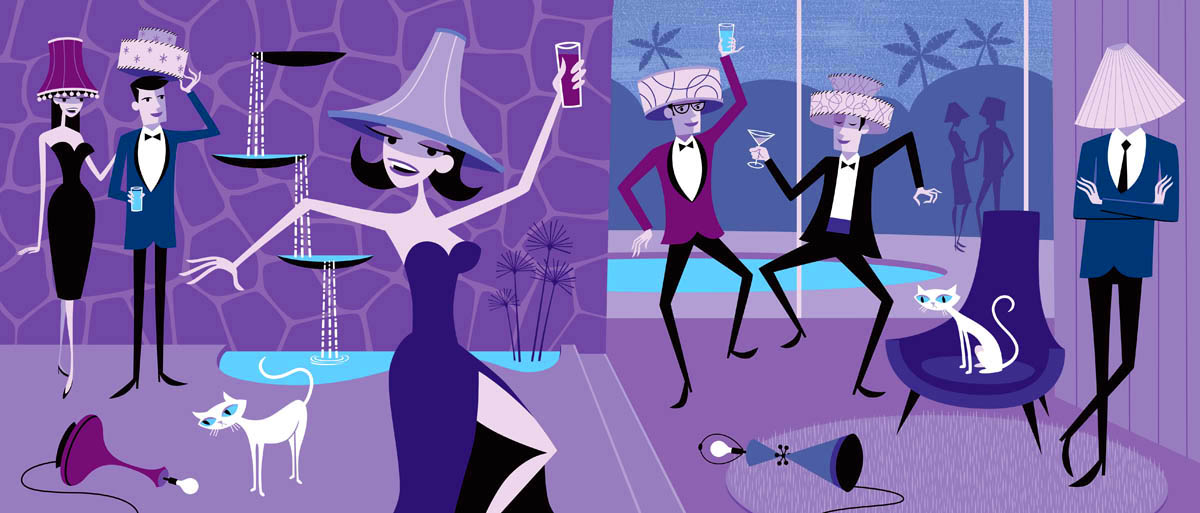Josh Agle, the artist known by most as Shag, tells 360Modern about how his beginnings in the music industry led to a career in mid-century Modern-inspired art.

For those unfamiliar with the artwork of Josh Agle, better known as Shag, one glance has an instantly transportive effect that is at once youthful and nostalgic. Color-saturated scenes of rollicking parties strike with a fierce nod to the ultra-cool social scene of 1960s Southern California. But Agle was not always a studio artist—rather, his career in art began with retrospective daydreams and more than a little hustle. In the ‘80s, Agle played guitar, mandolin, and banjo in a band called the Swamp Zombies, but often found himself doing graphic design and painting for his band and other music groups, creating posters as a side passion. Shortly after, Agle found himself at a record label as a full-time illustrator and graphic designer, where he worked for about eight years.
“People were asking, ‘Are you ever going to make paintings and have an art show?’ And I told them ‘No’ because I didn’t really consider myself that kind of artist,” Agle says. Finally, in 1995, one of Agle’s friends signed him up for an art show at a local coffee house in Santa Monica, and that was the beginning of Shag, a pseudonym made up of the last two letters of his first name and the first two of his last name.

While Shag’s style—graphic paintings that reference magazine and poster illustrations of the American mid-century—has remained fairly constant since the start of his career, his approach has evolved significantly. “When I first started painting, everything I illustrated was aspirational. I was painting places I wanted to be, parties I wanted to be at, architecture I wished I could live in,” he says.
As Agle became a staple in the Palm Springs Modernism scene, events like Modernism Week turned into annual sources of inspiration, and he suddenly found himself immersed in the parties he once fantasized about. “As my career progressed, especially spending so much time in Palm Springs, my life started to look a lot more like that, so then the art began to focus on real experiences.” Most recently, he was commissioned to create the official poster of the design event for 2021.

Shag’s scenes of laughing men and women slung on mid-century furniture point to an instantly-recognizable design milieu, one that falls into step with the beat of a roaring few decades of Hollywood nightlife, set against the backdrop of residential California Modernism. There’s a sense of invincibility in these paintings, owed to a blatant vintage feel and a timeless hankering for a good time—all underscored by a playful irreverence that can be traced back to the roots of the artist’s style. “The classic Shag style is based on commercial illustrations of the ‘50s and ‘60s, but I had never seen that style used in the context of a fine art gallery,” explains Agle. “When I started making art, that’s the style I wanted to use.”

Shag’s art gets at the core of a seismic cultural shift that took place during the mid-century: A new generation of Hollywood celebrities was, for the first time, being photographed socializing in their own residences, making public the images of the lifestyle that stardom afforded. At the surface, Shag’s compositions are framed around a relatively uncomplicated idea: Enjoy the party. A deeper dive into his work, though, reveals a clever inversion of social expectations, whether it’s the placement of cartoon-like images among the ranks of fine art, or celebrities at a house party. The effect is both paradoxical and playful, swapping out the expected for the exciting—whether it’s the borderline-parental cats looking at fallen lamps (and the dancers that knocked them over) in “Eight Shades of Drunk” or the shameless black-tie skinny-dippers in “995 Skyline Drive,” Shag communicates an unlikely innocence to his characters, if not in their behavior, then in their pure pursuit of fun.
For more mid-century and contemporary Modern design inspiration, visit us at 360modern.com.
